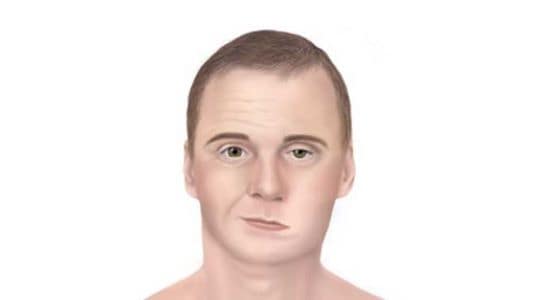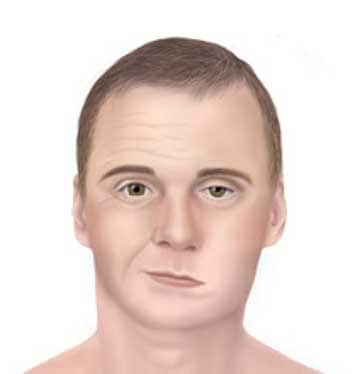What to know
- Neurological complications most often occur in early disseminated Lyme disease, with numbness, pain, weakness, facial palsy/droop (paralysis of the facial muscles), visual disturbances, and meningitis symptoms such as fever, stiff neck, and severe headache.
- Facial palsy is treated with oral antibiotics and Lyme meningitis/radiculoneuritis can either be treated with oral or intravenous antibiotics, depending on severity.

Neurologic Lyme disease
Neurologic symptoms of Lyme disease occur when the Lyme disease bacteria affect the peripheral or central nervous systems.
- Cranial nerve involvement: When the cranial nerves are affected, facial palsy (droop) can occur on one or both sides of the face.
- Peripheral nerve involvement: When the peripheral nerves are affected, patients can develop radiculoneuropathy which can cause numbness, tingling, "shooting" pain, or weakness in the arms or legs.
- Central nervous system involvement: When the central nervous system is affected, Lyme meningitis can cause fever, headache, sensitivity to light, and stiff neck.
Out of every 100 patients whose cases are reported to CDC, 9 have facial palsy, 4 have radiculopathy, and 3 have meningitis or encephalitis. Because of reporting practices, this statistic may overestimate how often these manifestations are seen by clinicians.
Symptoms
Neurological complications most often occur in early disseminated Lyme disease, with numbness, pain, weakness, facial palsy/droop (paralysis of the facial muscles), visual disturbances, and meningitis symptoms such as fever, stiff neck, and severe headache.

Treatment
Facial palsy is treated with oral antibiotics and Lyme meningitis/radiculoneuritis can either be treated with oral or intravenous antibiotics, depending on severity (see tables below). Most people with Lyme disease respond well to antibiotics and fully recover. Varying degrees of permanent nervous system damage may develop in people who do not receive treatment in the early stages of illness and who develop late-stage Lyme disease.
Key points for healthcare providers
- In patients with facial palsy who are unable to close one or both eyes, eye drops or an eye patch may be needed to prevent dry eyes.
- Neurologic symptoms do not necessarily indicate central nervous system infection in a patient with Lyme disease.
- Two-step serologic testing for Lyme disease is the recommended diagnostic test for neurologic Lyme disease.
- Cerebral spinal fluid analysis is not necessary to diagnose Lyme meningitis but can help exclude other causes of bacterial meningitis.
- Consider Lyme radiculoneuritis in patients who report severe limb or truncal radicular pain without preceding trauma who live in or who have traveled to Lyme-endemic areas.
- Talk to patients about tick bite prevention.
Antibiotic treatment of neurologic Lyme disease
These regimens may need to be adjusted depending on a person’s age, medical history, underlying health conditions, pregnancy status, or allergies. Consult an infectious disease specialist regarding individual patient treatment decisions.
| Age Category | Drug | Dosage | Maximum | Duration (Days) | References |
|---|---|---|---|---|---|
| Adults | Doxycycline | 100 mg, twice per day orally | N/A | 14-21 | 2,3 |
| Children (any age) | Doxycycline | 4.4 mg/kg per day orally, divided into 2 doses | 100 mg per dose | 14-21 | 2,3 |
| Age Category | Drug | Dosage | Maximum | Duration (Days) | References |
|---|---|---|---|---|---|
| Adults | Doxycycline OR |
200 mg per day orally, divided into 1 or 2 doses | N/A | 14-21 | 3,5 |
| Ceftriaxone* | 2 grams intravenously, once a day | N/A | 14-21 | 5 | |
| Children (any age) | Doxycycline OR |
4.4 mg/kg per day orally, divided into 1 or 2 doses | 100 mg per dose | 14-21 | 1,3 |
| Ceftriaxone* | 50-75 mg/kg intravenously once a day | 2 g per day | 14-21 | 4 |
* Oral therapy can be substituted when the patient is stabilized or discharged to complete the course.
Treatment references
- Lopez SMC, Campfield BT, Nowalk AJ. Oral management for pediatric Lyme meningitis. J Pediatric Infect Dis Soc.2019;Jul 1;8(3):272-275.
- Kowalski T, Berth W, Mathiason M et al. Oral antibiotic treatment and long-term outcomes of Lyme facial nerve palsy. 2011;39(3):239-45.
- Dotevall L, Hagberg L. 2011. Successful oral doxycycline treatment of Lyme disease-associated facial palsy and meningitis. Clin Infect Dis. 1999;28(3):569-574.
- Guet-Revillet H, Levy C, Vallet C et al. Lyme neuroborreliosis in children: Report of nine cases and a review of the literature. Arch Pediatr. 2019;26(3):133-137.
- Halperin J. Nervous system Lyme disease: diagnosis and treatment. Curr Treat Options Neurol. 2013;15(4):454-464.
